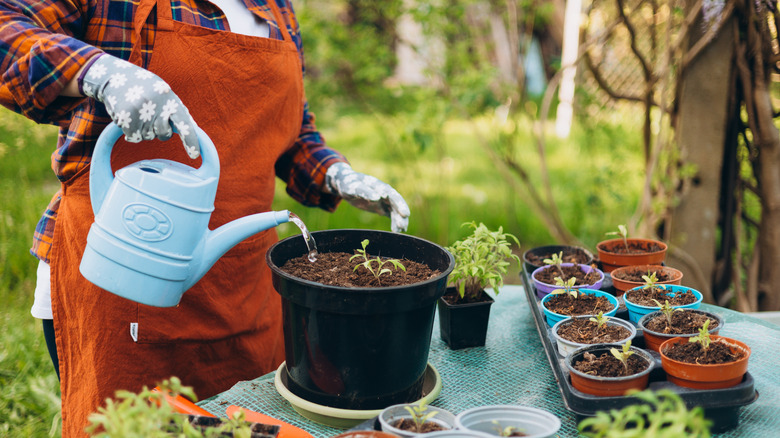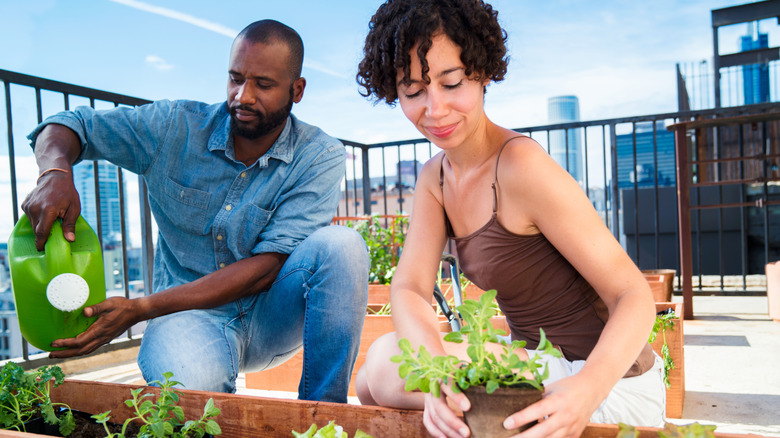How Crop Rotation Can Help You Reuse Potting Soil Effectively
Potting soil can take a bite out of your gardening budget, especially if you need a lot of it. If you adopt the right approach, reusing last year's soil can stretch your dollars and produce delicious vegetables. One easy practice for vegetable container gardens is rotating your crops like you would on a farm. Nutrient extraction differs from one plant species to the next. By growing a different type of plant than last year, you help reused soil have healthy levels of nitrogen, phosphorus, and other nutrients.
Before planting anything though, make sure your old potting soil is in good shape. If it hasn't passed the two-year mark and isn't moldy, it may be a good candidate for reuse. Mold sometimes shows up as white areas in the potting mix. If you see this warning sign, don't reuse the soil in a container garden. Instead, add it to a compost pile or in-ground soil. Then stir the soil to loosen it, incorporate air, and look for other issues. Make sure your potting soil hasn't hardened, developed a foul odor, or attracted plant-damaging insects. Also, break up clumps and remove stray roots and leaves.
You might also want to learn when you should sterilize potting soil and how to do it right to wipe out potential pathogens. You can sterilize your soil with hydrogen peroxide or by placing it in a sealed black plastic bag and letting the sun cook it for four to six weeks. After this step, you can move on to the planting phase of crop rotation.
Choosing plants that promote nutrient balance in your soil
When deciding what to grow next in reused potting soil, consider which vegetable plants are related to each other and which ones draw the most nutrients from the soil. Heavy feeders such as cucumbers and tomatoes extract large quantities of nutrients, whereas radishes and other light feeders extract small quantities. Some plants need lots of a particular nutrient. For example, tomato plants need ample calcium in the soil. Without it, they're likely to develop blossom-end rot.
Try not to grow heavy feeders in the same soil from one year to the next. Also, consider fertilizing to replenish nutrients last year's plants may have used. Research the plants you plan to grow to see what kind of fertilizer they need. If you're not sure of your soil's nutrient content, it might be a good time to try 13-13-13 fertilizer in your garden. You may also benefit from blending reused soil with new potting soil or pH-boosting lime, especially if your new plants prefer alkaline conditions. Most potting mixes contain peat moss, which increases soil acidity, especially as it breaks down.
In addition to rotating heavy and light-to-moderate feeders, avoid growing plants from the same family in the same soil two years in a row. For instance, if you last grew broccoli, a member of the brassica family, don't grow kale or cabbage in your reused soil this year. Closely related plants usually have similar nutrient needs. They also tend to be vulnerable to many of the same pests and diseases. By choosing an unrelated plant, you also discourage problems such as squash bugs and tomato blight.

